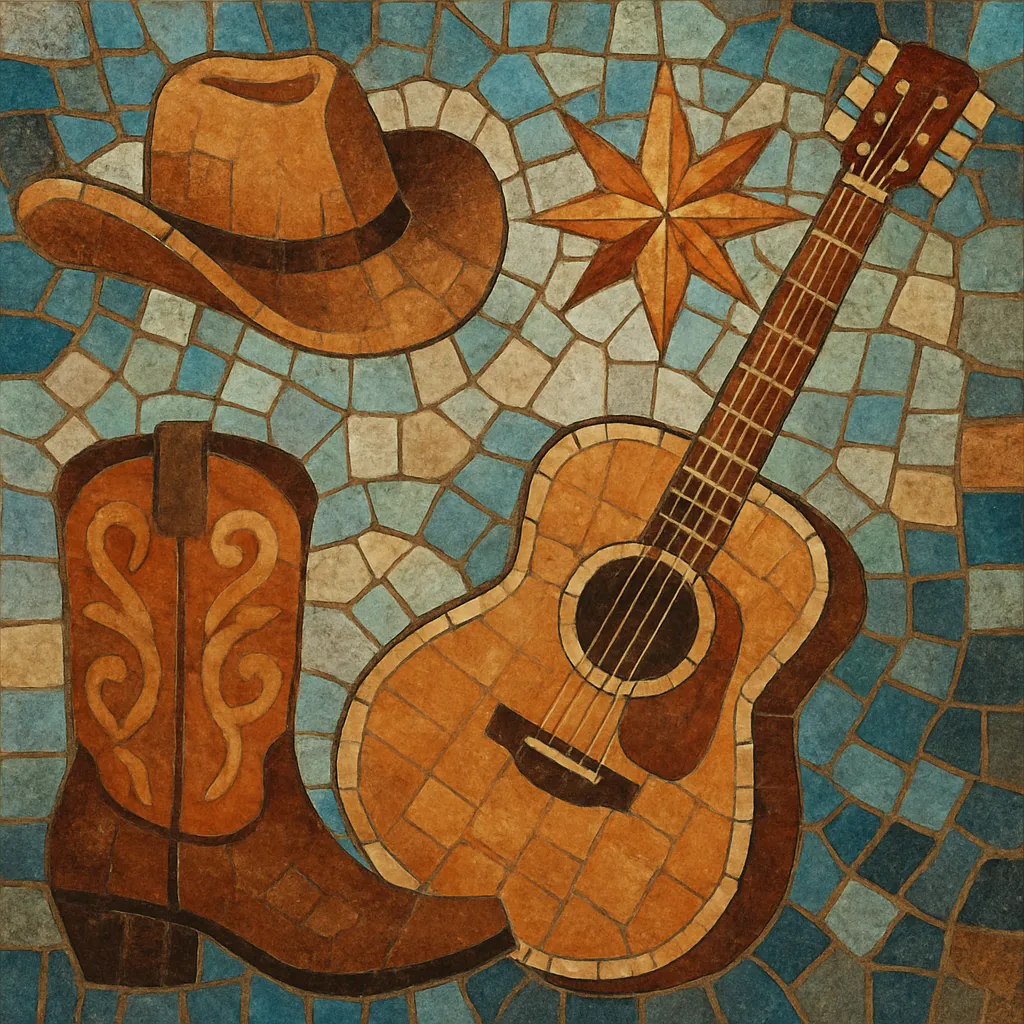Country pop blends the narrative songwriting and acoustic roots of country music with the melodic hooks, streamlined structures, and polished production of pop.
Born from the Nashville Sound and later countrypolitan aesthetics, it emphasizes smooth vocals, lush arrangements, and radio-friendly choruses while retaining country’s storytelling and Americana imagery. Typical instrumentation includes acoustic and electric guitars, subtle pedal steel, piano or pads, and tasteful strings, with light, steady drums supporting mid-tempo grooves.
Lyrically, country pop centers on love, home, heartbreak, resilience, and everyday life, delivered with conversational clarity and contagious, sing-along refrains that bridge country’s heart and pop’s sheen.
Country pop emerged from the Nashville Sound, a studio-driven approach that softened honky-tonk edges with string sections, background vocals, and smoother rhythms. Countrypolitan further refined this polish, making records that could sit comfortably on both country and pop charts. Artists like Patsy Cline and Jim Reeves laid the crossover groundwork by pairing country storytelling with pop balladry and lush orchestration.
The 1970s saw full-fledged mainstream success. Glen Campbell, Dolly Parton, Kenny Rogers, and Olivia Newton-John scored hits on pop radio while maintaining country roots. Producers and session players in Nashville and Los Angeles crafted sleek, hook-forward recordings with gentle pedal steel, acoustic guitars, and prominent string or keyboard textures. The decade established country pop as a reliable bridge between formats.
After an ’80s ebb and the Urban Cowboy moment, the ’90s reignited crossover appeal. Shania Twain’s arena-sized hooks, Faith Hill’s polished ballads, and the general rise of contemporary country refocused the genre on massive choruses, pristine productions, and relatable, cinematic storytelling. Radio consolidation and country’s growing national footprint helped sustained chart presence.
Carrie Underwood, Keith Urban, Rascal Flatts, and Taylor Swift advanced a pop-forward sound with brighter melodies, layered vocals, and modern drum programming. By the 2010s, pop-country collaborations and streaming-era playlists blurred boundaries further, while bro-country emphasized pop structures and glossy sonics. At the same time, artists like Kacey Musgraves showed how country pop could be intimate, artful, and critically acclaimed.
Country pop remains a core pathway for cross-format success. It balances country imagery and instrumental signifiers with contemporary pop production, leveraging tight songwriting, earworm choruses, and high-fidelity mixes to thrive on modern radio and streaming platforms.


